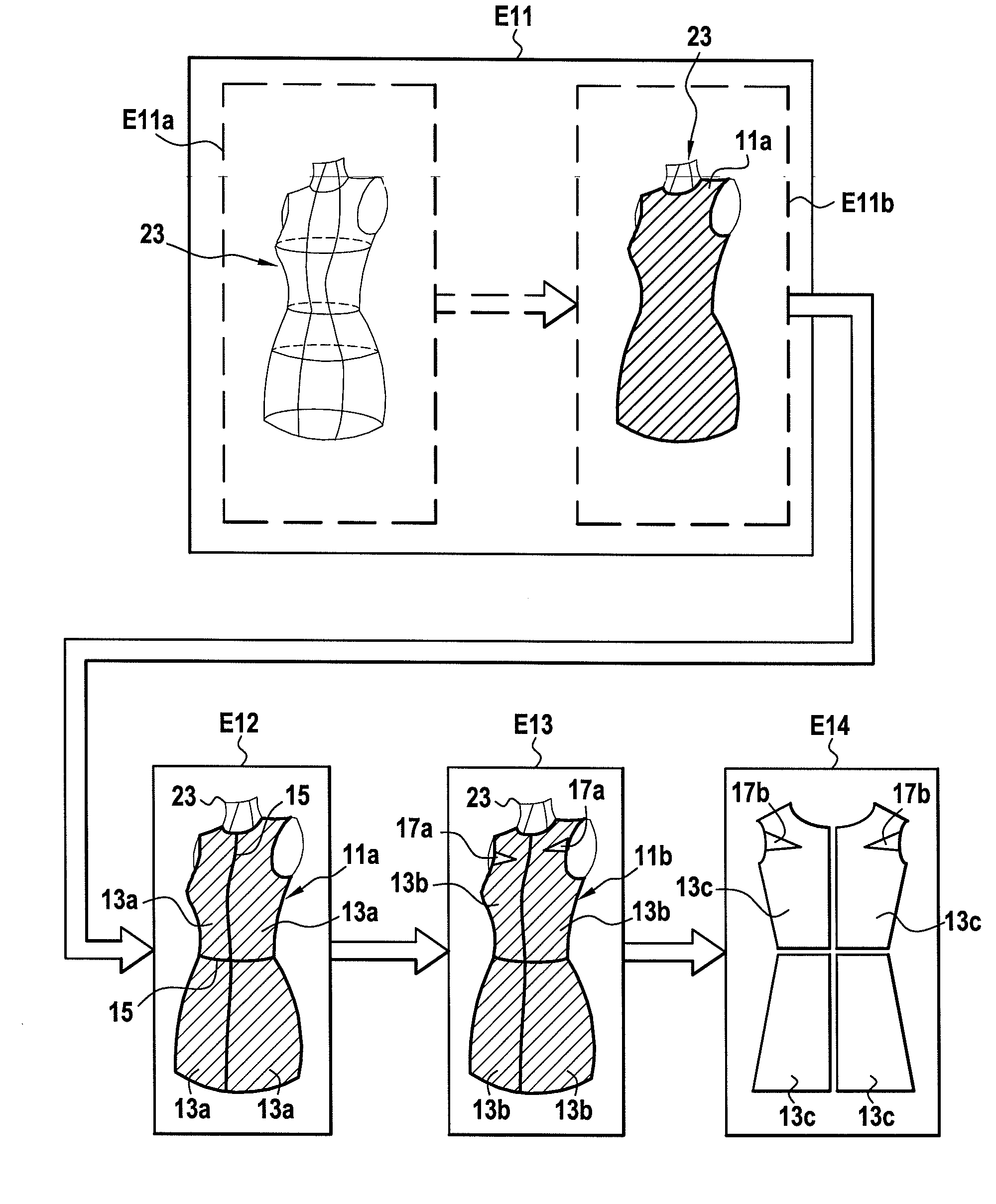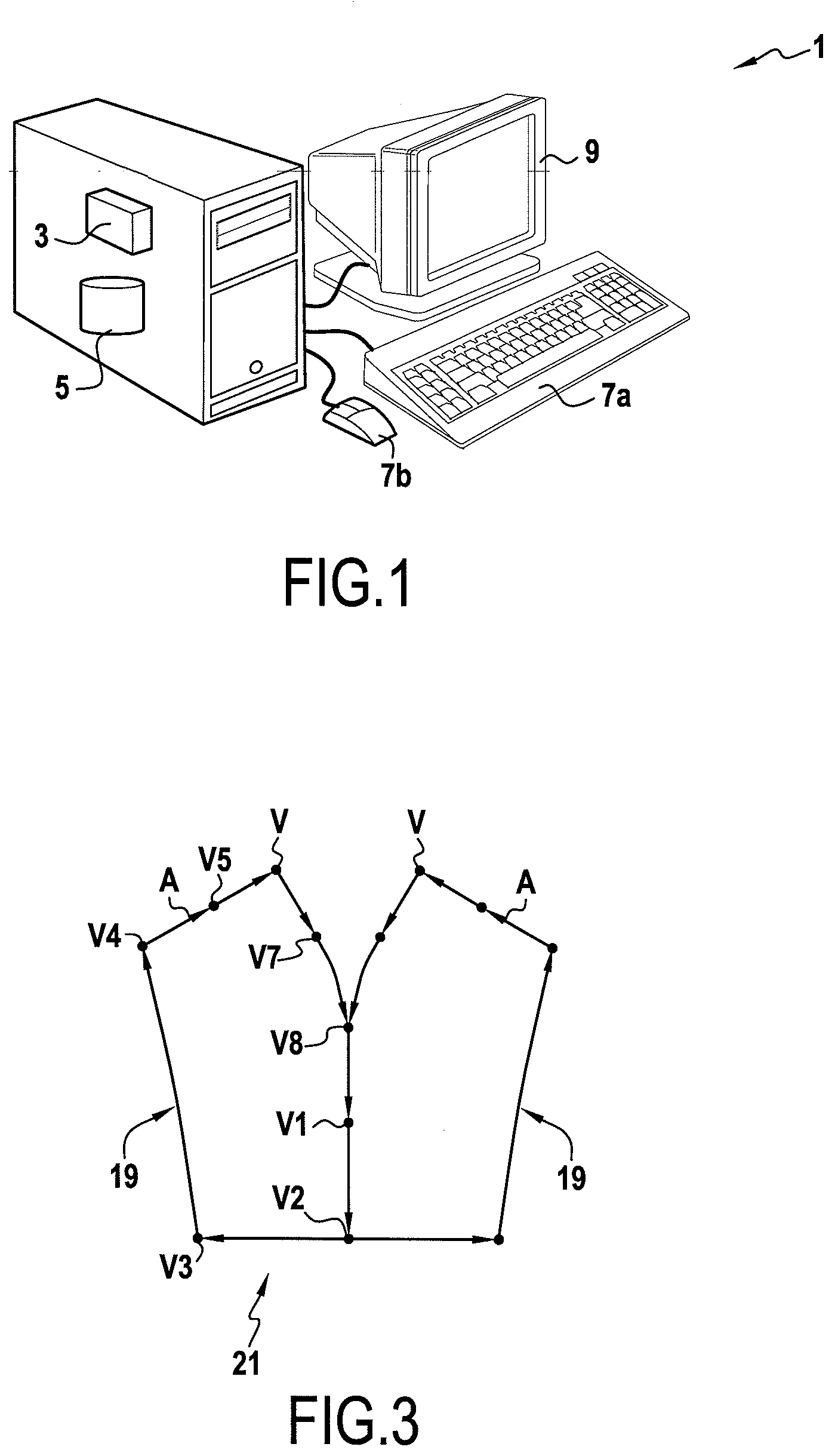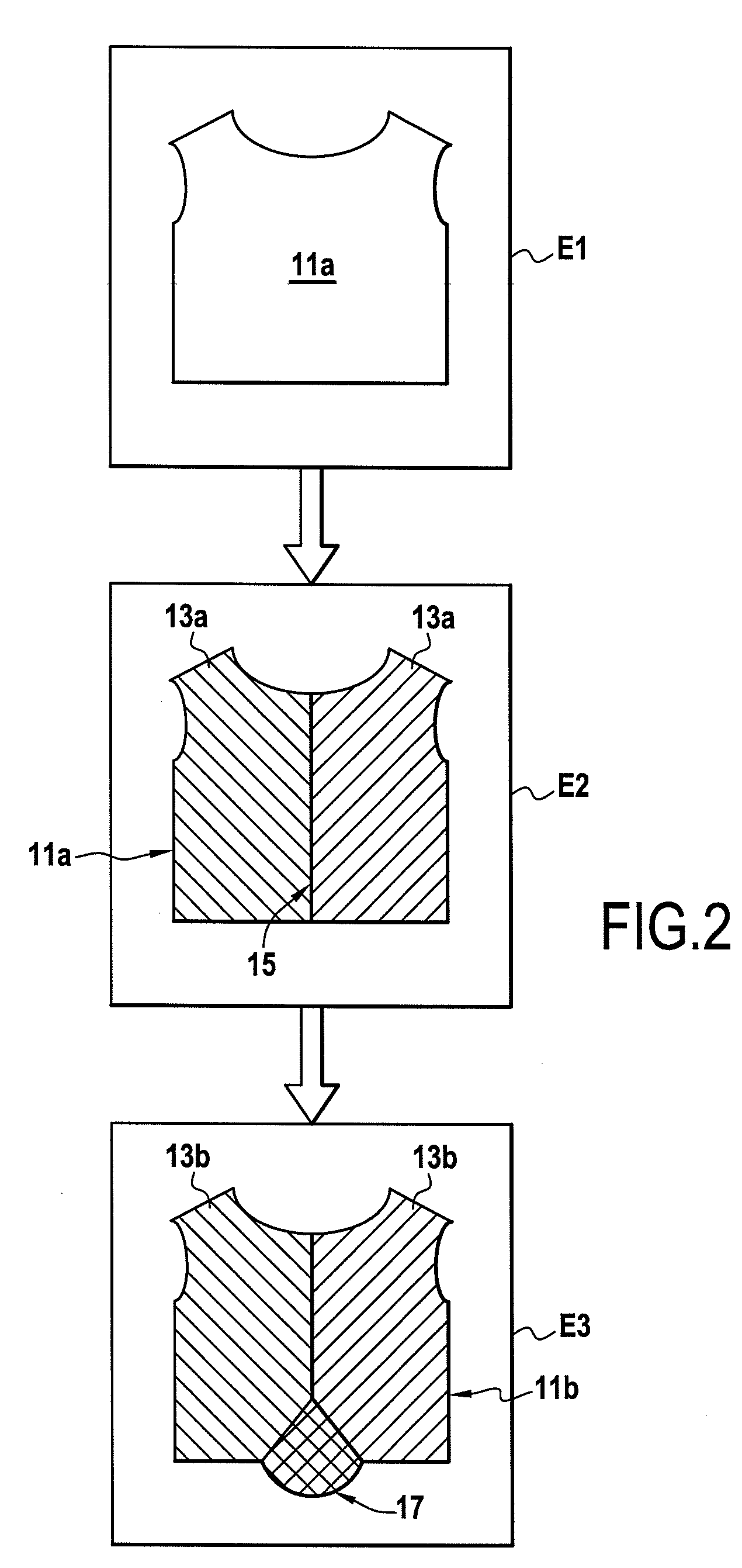Device and Method for Designing a Garment
a computer-aided design and garment technology, applied in the field of computer-aided design of garments, can solve the problems of inability to reproduce the constraints defined by pattern designers or patterners, methods that place stringent limitations on the nature of flat clothing patterns, and limited computer-aided garment design
- Summary
- Abstract
- Description
- Claims
- Application Information
AI Technical Summary
Benefits of technology
Problems solved by technology
Method used
Image
Examples
Embodiment Construction
[0064]Generally speaking, the design of a garment starts with a sketch drawn by a stylist illustrating the model of the garment to be produced.
[0065]Subsequently, the patterners design the actual geometric shapes of the patterns and also the dimensions thereof in accordance with the various sizes of the garment. Thus, the patterner creates a block or base pattern which is most suitable for the model of the garment to be designed.
[0066]A base pattern is an initial or intermediate pattern, the shape of which is used at all times for the design of the garments. The base pattern is generally designed for an average-sized body of a target population.
[0067]The patterner is very adept at making the necessary modifications or transformations to the base patterns to obtain the model of the desired garment. For example, the patterner can modify the shape or the dimensions of a base pattern to attain the targeted model. A set of base patterns will be deemed to be suitable if the volume produce...
PUM
 Login to View More
Login to View More Abstract
Description
Claims
Application Information
 Login to View More
Login to View More - R&D
- Intellectual Property
- Life Sciences
- Materials
- Tech Scout
- Unparalleled Data Quality
- Higher Quality Content
- 60% Fewer Hallucinations
Browse by: Latest US Patents, China's latest patents, Technical Efficacy Thesaurus, Application Domain, Technology Topic, Popular Technical Reports.
© 2025 PatSnap. All rights reserved.Legal|Privacy policy|Modern Slavery Act Transparency Statement|Sitemap|About US| Contact US: help@patsnap.com



